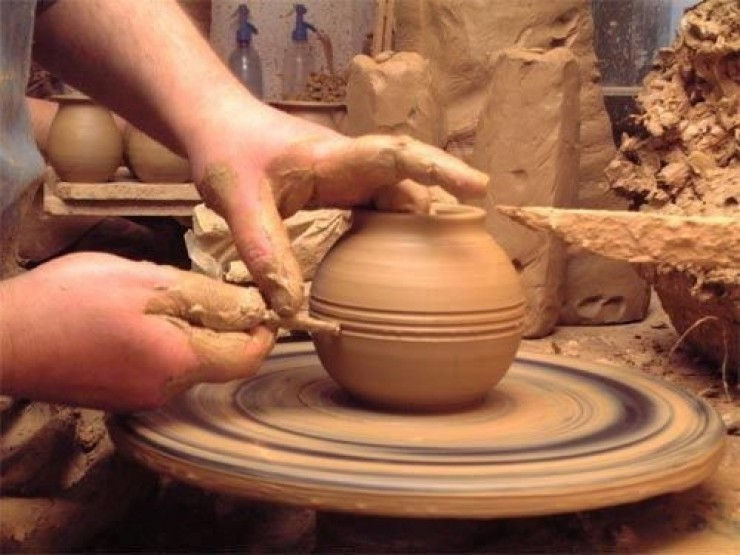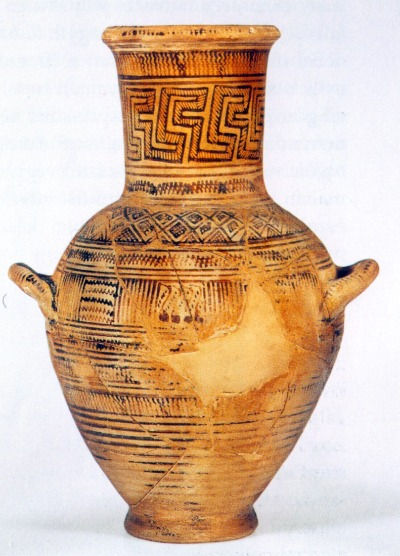Clay - ceramics - porcelain What is the difference?
- BeWeCeramics

- Dec 2, 2022
- 3 min read
Updated: Jan 7, 2023
We have been asked many times what our products are made of and what we sell. Although we buy our ceramics ready-made and "just" paint them, we thought we would write a short article on this subject to give a little grip to the average inquirer who is not in the trade.
All three materials are used to make pots and the expectations are pretty much the same for all of them. They should be durable, easy to clean and, of course, should not spill food or drink. Nobody wants to sip their tea from the table instead of their mug.
There are many different types and uses for all three materials, but we'd like to present them from the point of view of pot-making. We are ceramic painters and typically offer our customers plates, bowls and mugs.
Clay
The oldest of the three materials in use. First used by prehistoric people to make small statues, it was later glued to wicker baskets to increase its durability and make it more suitable for storage. The history of pottery dates back around 9,000 years, when clay was used independently.
Clay is a sedimentary mineral formed by the decomposition of igneous rocks and has a very small grain size of 0.02 mm or less. In their natural form, they contain a wide variety of clay minerals, of which the kaolinite group will be the most important. The important thing for us in terms of pottery is that it can hold a lot of water while absorbing very little.
It is a material that can be easily shaped and worked in water, and that becomes solid and stable after drying and especially after firing. However, they are also quite porous after firing.
They are fired at low fires between 600 and 800 degrees Celsius, where the first step of clay formation takes place.
The best known types are white and red fired pottery clay.

Ceramics
Some believe that the word derives from the Greek kerameia ("burnt out"), but I have also found sources that link the word to the potters working in the Keramaikos square in Athens. In any case, we can be sure that the word is of ancient Greek origin.
Pottery is also a type of clay, which does not exist naturally in the composition we use today. The proportion of kaolin in the kaolinite group of minerals will determine the compactness of the ceramic after firing.
Between 850 and 1000 degrees Celsius, recrystallisation and mullite formation (kaolin is transformed into mullite by heat) will already start. This will make the material harder and less porous.
A separate group of ceramics is the high-fired ceramics, which are fired at 1000-1200 degrees and the increase in temperature results in a harder end product.

Porcelain
This material is the youngest of the three. It was discovered in the Honan province of China during the Tang Dynasty (618-907). In Europe, however, it was not until the 15th and 16th centuries that experiments began.
Porcelain is a type of ceramic, but it is fired at even higher temperatures, up to 1400 degrees Celsius. What distinguishes it from ceramics is that above 1000 degrees Celsius the vitreous phase begins and above 1200 degrees Celsius the kaolin is transformed into a stable mullite. Porcelain objects are typically fired at 1200-1400 degrees and become almost completely solid at this temperature.

Summary
The smaller the particle size and the more kaolin it contains, and the higher the temperature at which these materials are fired, the denser and more durable they become. Our supplier works with semi-porcelain body, which is harder than clay but softer than porcelain. The hardness basically depends on the firing temperature. Our products are fired between 1040-1050 degrees because this temperature still allows us to use the colours and glazes we use. This glaze makes our products waterproof. If you are curious about my creations, visit our webshop.








Comments